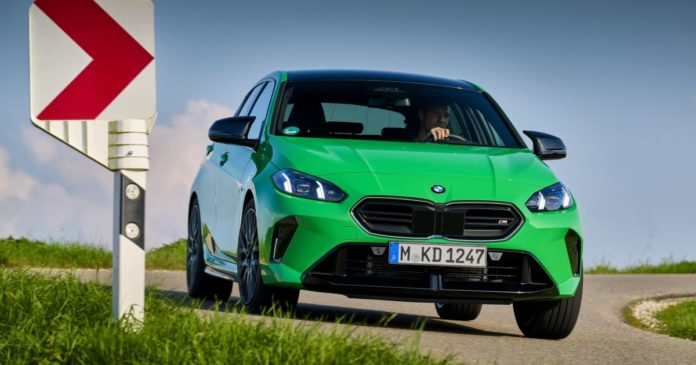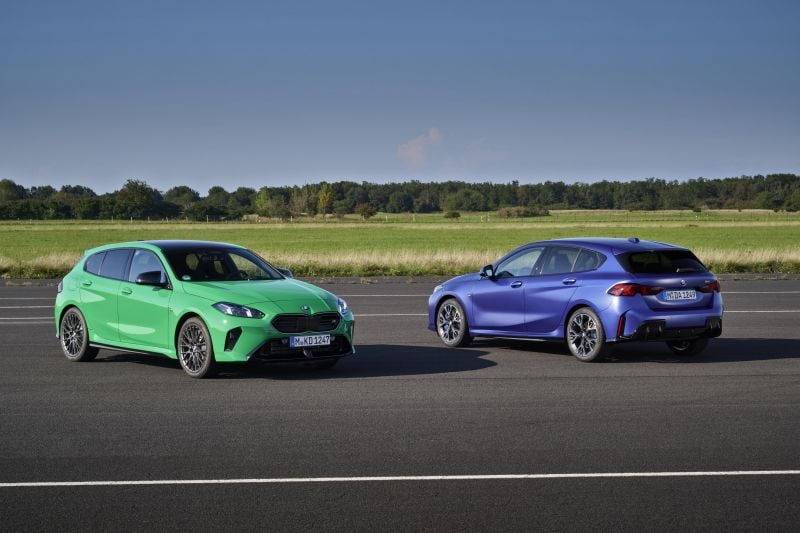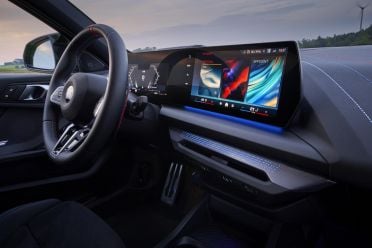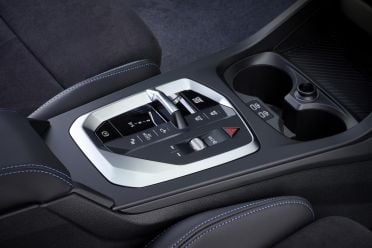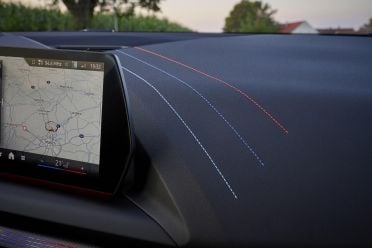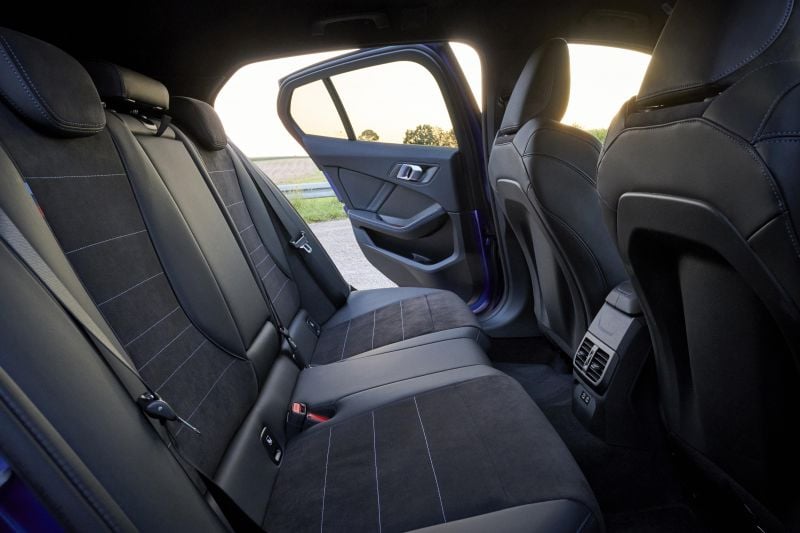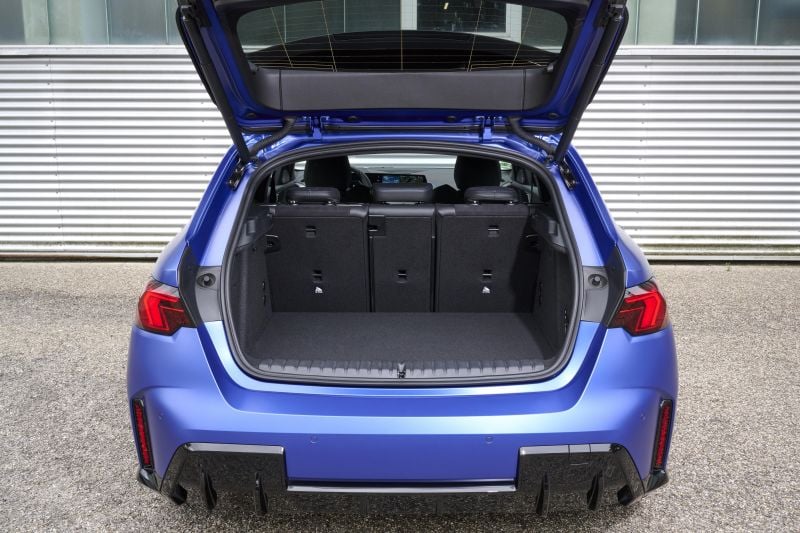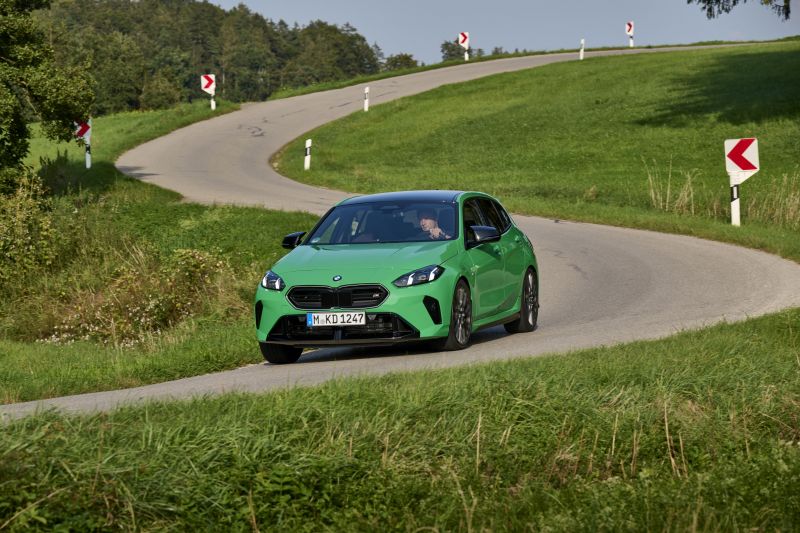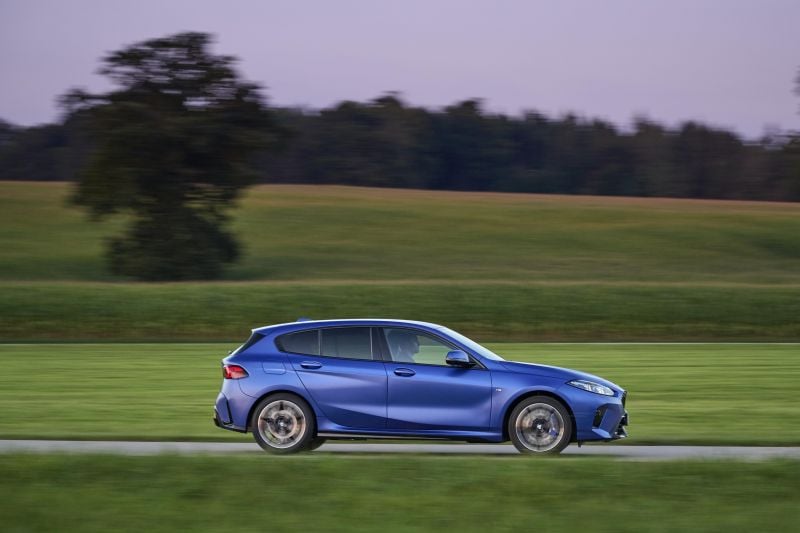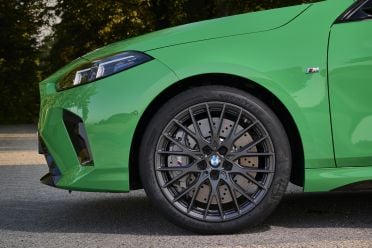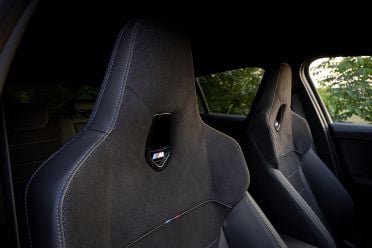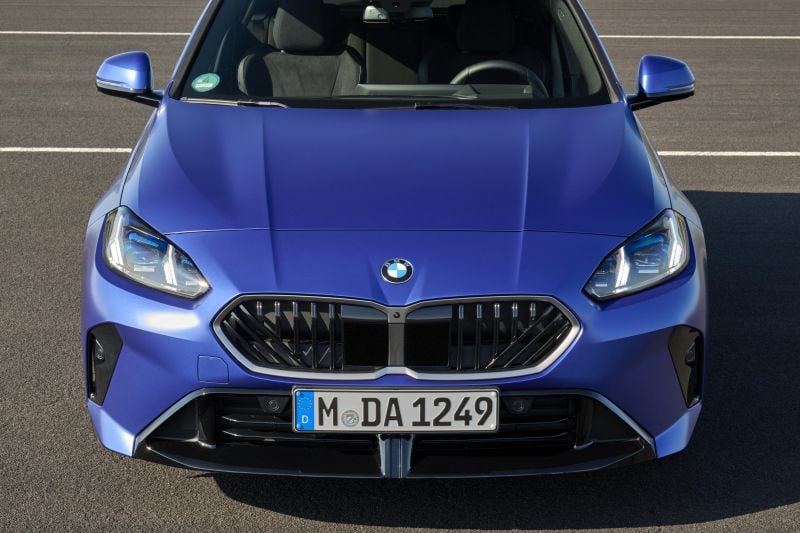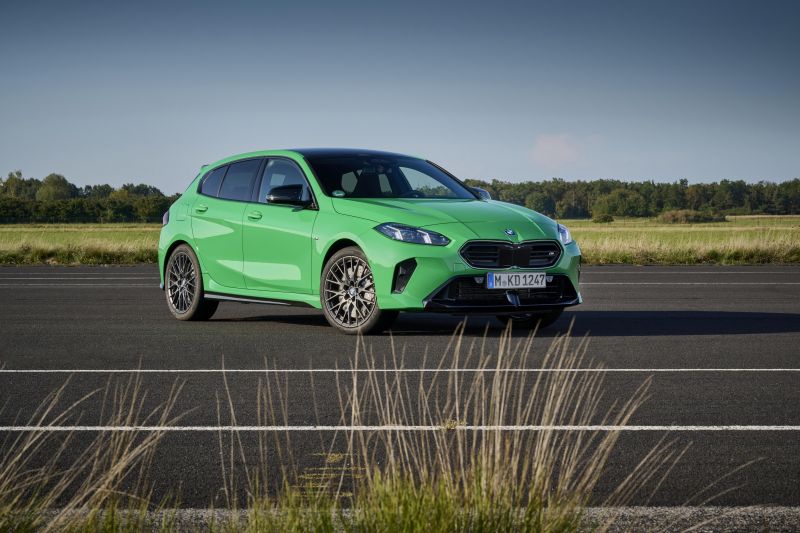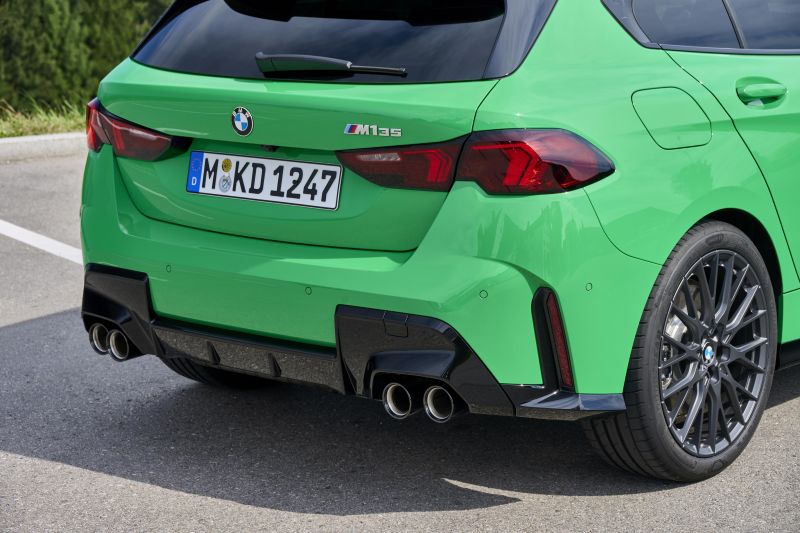The new fourth-generation BMW 1 Series enters a competitive market it arguably helped create two decades ago.
The 2025 BMW 1 Series comes more than 20 years since the original model was launched back in 2004, a time when BMW decided it needed to appeal to younger buyers in a class below the popular 3 Series.
A BMW badge on a more affordable model with power going to the rear wheels and carrying BMW’s core DNA of driving enjoyment was definitely a big hit with buyers. The German brand has sold over 3 million 1 Series units globally oveer three generations, creating many lifetime customers who have stepped out of the 1er and into bigger BMWs.
The fourth-generation 1 Series is a little bit different to the original formula, however. Entry models remain front-wheel drive (and three-cylinder), while the M135 sticks with the four-cylinder but has seen a reduction in torque from the previous generation thanks to its new seven-speed dual-clutch transmission.
But, has that impacted the overall offer of the new-generation 1 Series? We flew to Germany to find out.
From the outside, the new BMW 1 Series is recognisable by its new front end design, accentuated with wide air intakes and a new BMW radiator grille that is available with vertical and diagonal bars as a first. The new generation is also easy to spot thanks to its unique arrow-shaped elements, such as daytime running lights and turn indicators.
Despite losing its rear-wheel drive setup, the 1 Series design still looks as aggressive and sporty as ever. It houses a long bonnet with a sweeping roofline and the iconic Hofmeister kink on the C-pillar.
Love it or hate it, the rear end of the 1 Series is a very bold design from the Germans. It has a racecar-like apron that now extends out with vertical reflectors and black diffuser-style inserts.
In person and in the right colour, we definitely love the look of the new 1 Series, but we can also see how it can be a little over the top (especially at the rear) for some.
How does the BMW 1 Series compare?
View a detailed breakdown of the BMW 1 Series against similarly sized vehicles.

BMW
1 Series
How much does the BMW 1 Series cost?
Australian pricing and specifications were announced in July ahead of an arrival in the latter stages of 2024.
| Model | Price excluding on-road costs |
|---|---|
| 2025 BMW 118 | $56,500 (+$1700) |
| 2025 BMW M135 xDrive | $82,500 (+$5900) |
To see how the BMW 1 Series lines up against the competition, check out our comparison tool.
What is the BMW 1 Series like on the inside?
The wonderful thing about buying an entry model of a luxury brand is that you often get the same level of technology and features of a much more expensive car.
-
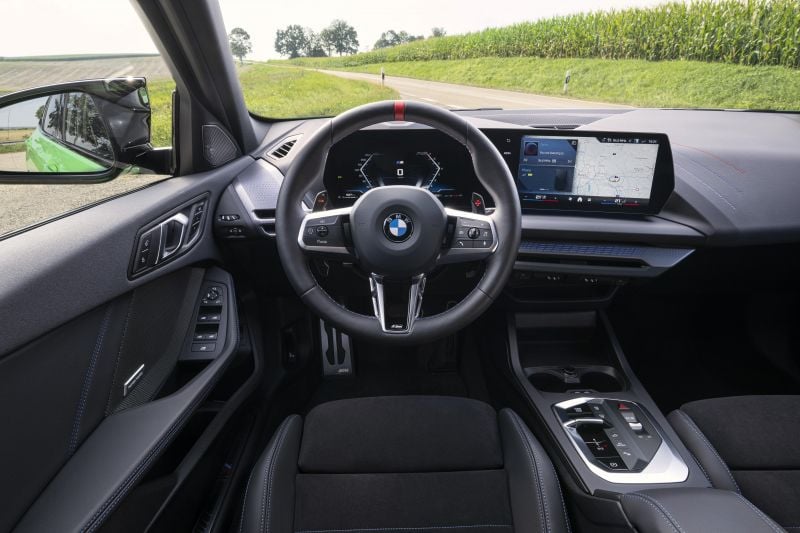
M135 xDrive
It doesn’t make sense for a company like BMW to create different operating systems and technologies across its different models.
As such, the 1 Series is blessed with hundreds of millions of dollars of research and development budget, and features first introduced to the market on significantly more expensive cars.
In the same way that we would likely criticise the BMW 7 Series now for having an operating system and technology that is common to the 1 Series, we can praise the entry BMW in reverse.
As with Audi and Mercedes-Benz, the halo cars are used as technological launch pads, and those features then filter down to the rest of the range. This is obvious when you sit inside the new BMW 1 Series cabin.
There is an immediate wow factor with the super high resolution screens and high cabin build quality. The curved displays orientated toward the driver are very compelling.
While the screens themselves may be smaller (10.25-inch information display and a 10.7-inch control display) than some of the higher-spec BMW models, they work just as fast running BMW’s latest Operating System 9.
As you would expect from a new car, the climate control buttons have all disappeared and now you are left with using the screen in order to change the temperature and adjust the fan speed.
Unlike the recently launched BMW X3, the 1 Series misses out on the interaction bar that gives much quicker access to some of those features, which we would love to see. Nonetheless, the always-on nature of the temperature control on the screen makes it easy to access and change regardless.
The cabin itself feels very sporty, with a chunky steering wheel and supportive seats. You can option your BMW with a leather-free interior and go for new ‘econeer‘ upholstery made from recycled PolyEthylene Terephthalate (PET).
This is a five-seater, of course, but it’s more suited to carrying four average adults and a fifth if the need arises for a short trip.
BMW has redesigned the seats entirely and we felt them to be more supportive and enjoyable to sit in for long distances drives. We found head- and leg room in both rows plentiful for a car this size, but things get tight if the middle seat is also in use.
Like other vehicles running BMW OS9, you can control your new 1 Series using your phone. In fact, you no longer even need a key, with your smartphone acting as the key. On the other hand, BMW has gone a little overboard trying to be a technology company, by even introducing its own app store so you can download apps like Audible and native podcast applications.
In Europe (and perhaps also in Australia at some stage), you can even download an app to watch live TV or streaming entertainment, but only when the car is stopped. Now you might be thinking that’s a great idea for when you are stuck in traffic, but it only works when the vehicle is stationary – not only that, but we found that with some of these apps it had to be in Park.
As far as we are concerned, cars are meant to be used for transportation. If you’re finding yourself watching TV or playing games in your stationary car using the car’s infotainment system, we would love to hear why you wouldn’t just use your iPhone?
Of course, most owners will simply mirror their phone using Apple CarPlay and never use BMW’s native system, but when some apps don’t have CarPlay or Android Auto integration, this may be a way of allowing them to work on BMW’s native operating system.
It’s fair to point out that while the apps and some of the features may be a little gimmicky, BMW OS9 is actually excellent. The speed at which the menus can be navigated, the clarity of the screens and the time it takes for things to work is very much like using a new iPad. It is a a great user experience for any BMW, let alone an entry model BMW.
We also love this new generation of cabin lighting that BMW has fitted to its cars, including the 1 Series. You can manually set a solid cabin colour as you wish, but there are a number of default themes that really enhance the cabin ambience and add to the enjoyment of any drive.
These go from a sporty vibe to a relaxed or soothing calmness of lights casually moving around the cabin. Interestingly, you can purchase new colour schemes from the BMW App Store.
From a practicality perspective, you can get the 1 Series with a 40:20:40 split rear seat backrest which can be folded down to increase luggage compartment volume from 380 litres to up to 1200 litres.
Overall, we are pretty impressed with the 2025 BMW 1 Series’ interior fit and finish, and feel that for an entry model into a luxury brand, you’re not getting shortchanged.
| Dimensions | BMW 1 Series |
|---|---|
| Length | 4361mm (+42mm) |
| Width | 1800mm |
| Height | 1459mm (+25mm) |
| Wheelbase | 2670mm |
| Cargo capacity | 380-1200L |
To see how the BMW 1 Series lines up against the competition, check out our comparison tool.
What’s under the bonnet?
Power and torque or the entry-level BMW 118 are up 12kW and 10Nm compared to the previous-generation model respectively, while for the M135 xDrive it’s up 8kW but down 50Nm.
-
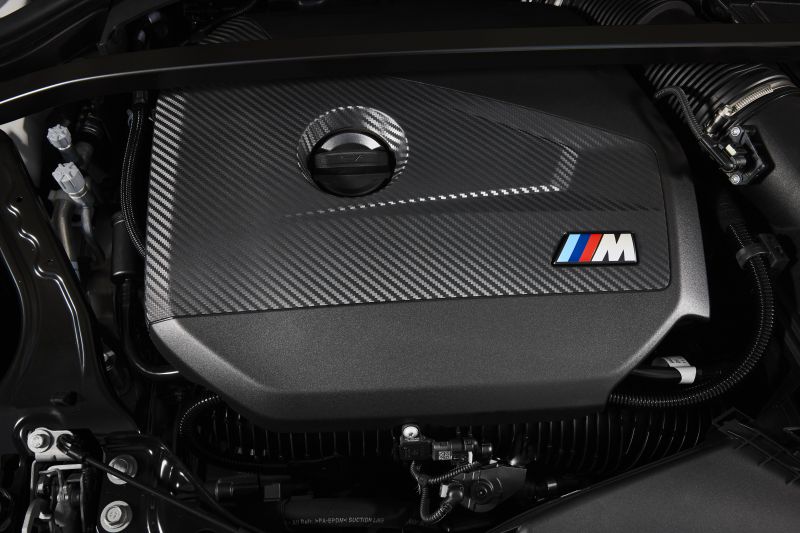
M135 xDrive
| Specifications | BMW 118 | BMW M135 xDrive |
|---|---|---|
| Engine size | 1.5-litre 3cyl turbo | 2.0-litre 4cyl turbo |
| Power | 115kW (+12kW) | 233kW (+8kW) |
| Torque | 230Nm (+10Nm) | 400Nm (-50Nm) |
| Drive type | Front-wheel drive | All-wheel drive |
| Transmission | 7-speed dual-clutch auto | 7-speed dual-clutch auto |
| Acceleration (0-100km/h) | 8.0 seconds | 4.9 seconds |
| Fuel economy (claimed | (TBC) | 8.1L/100km |
To see how the BMW 1 Series lines up against the competition, check out our comparison tool.
How does the BMW 1 Series drive?
For our test in Germany, we were given the keys to the BMW 120 and M135. For the launch of the vehicle in the Australian market, we are getting (at least initially) a lower-grade 118 instead of the 120 that we tested.
-
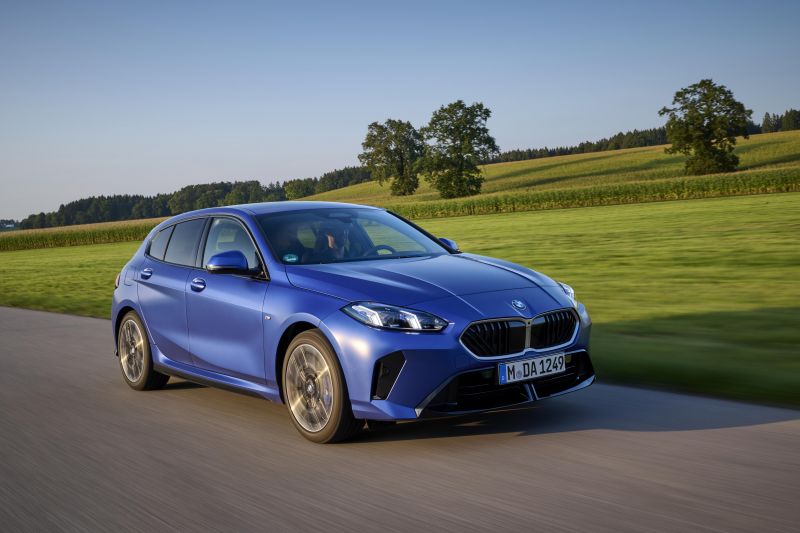
120
Although both use the same 1.5-litre three-cylinder turbo-petrol engine, the difference between them is 10kW and 50Nm in the 120’s favour (125kW and 280Nm) predominantly the result of a mild-hybrid electric motor and battery system in the 120 – which is also 0.2s quicker from 0-100km/h (7.8 seconds).
Our first impressions of the 120 were positive as a driver’s car. The three-cylinder petrol engine may seem underpowered on paper, but that is certainly not the case behind the driver’s seat – even if the car does weigh around 1500kg unladen. There is a raspy enthusiastic note from the little engine that encourages you to push harder.
Being a front-wheel drive platform, the base model car certainly doesn’t bode well in terms of giving that traditional BMW rear-drive experience, and that was certainly further emphasised in the torrential rain we endured during our drive in Munich.
Nonetheless, there’s no denying BMW has tuned the vehicle to be a fun drive. There is a great dynamic feel to how it corners and drives, you just have to watch the throttle application on exit to avoid the occasional burst of torque steer. We found the ride to be reasonably subtle, but it did occasionally feel a bit on the hard side.
-

M135
Moving up to the M135 xDrive, the new model is a four-cylinder like before, but it has now lost the previous-generation’s eight-speed automatic.
This means a a massive torque reduction of 50Nm, which BMW says is a result of the limitations of the seven-speed dual-clutch transmission (also used in the 118 and 120).
The previous model did the 0-100km/h sprint in 4.8 seconds, compared to the new car’s 4.9 seconds. This is pretty surprising given the new model weighs more and has less torque, but this has more to do with the latest launch control system in the fourth-generation.
During our drive that reduction of torque was relatively evident during in-gear acceleration.
That’s not to say the M135i isn’t quick, because it is. It’s just not as lively as it may have been with the eight-speed transmission and the extra torque.
On the plus side, the top-spec 1 Series is very confident-inspiring in how it manages corners and distributes torque to all four wheels.
Although it can’t send 100 per cent of its might to the rear-wheels alone (also why there is no Drift Mode), the 50:50 distribution is more than good enough to give it a proper AWD feel.
In the very wet weather in which we experienced the drive, it felt sure-footed and eager to keep pushing.
Overall, the driving dynamics of the 1 Series are now totally different to what they once were, with the original and second-generation models being rear-wheel bias and having access to four and six-cylinder engines.
But times change and cars evolve, and we can’t think of any new buyer jumping in either the 118 or M135 and being disappointed by how either drive or perform as an affordable BMW sports car.
What do you get?
118 highlights:
- 18-inch alloy wheels
- Tyre repair kit
- Tyre pressure monitoring
- M Sport package
- M high-gloss Shadowline highlights with extended contents
- Interior and exterior mirror package
- Adaptive LED headlights
- Adaptive M suspension
- Power tailgate
- 10.25-inch digital instrument cluster
- 10.7-inch touchscreen infotainment system
- Wireless Apple CarPlay and Android Auto
- DAB+ digital radio
- Onboard 5G connectivity
- Head-up display
- Wireless phone charger
- Proximity entry and push-button start
- M headliner Anthracite
- Veganza upholstery
- Heated front sport seats
- Power-adjustable front seats
- BMW Drive Recorder
- Semi-autonomous parking assist
M135 xDrive adds:
- 19-inch alloy wheels
- M rear spoiler
- M Sport brake, dark blue metallic
- Panoramic glass roof
- Black-painted contrast roof
- Harman Kardon premium sound system
- Heated steering wheel
- Front seat lumbar support
- Front seat massage function
Is the BMW 1 Series safe?
The 2025 BMW 1 Series has yet to be assessed by ANCAP or Euro NCAP.
Standard safety equipment includes:
- Autonomous emergency braking (AEB)
- Rear cross-traffic alert
- Exit warning
- Lane departure warning
- Lane change warning
- Adaptive cruise control with stop/go
- Speed limit information
- Parking Assistant Plus
- Front and rear parking sensors
- Surround-view camera
M135 xDrive adds:
- Evasion Assistant
- Crossroads warning
- Front cross-traffic alert
- Lane-keep assist
- Steering and Lane Control Assistant
How much does the 2025 BMW 1 Series cost to run?
The 2025 BMW 1 Series, like the wider BMW range, is covered by a five-year, unlimited-kilometre warranty.
There is currently no confirmation of service pricing for Australian models.
CarExpert’s Take on the BMW 1 Series
The fourth-generation BMW 1 Series is the best 1 Series that has ever been.
It arrives in Australia in a few months and while it has never been a huge seller for the brand locally, it should absolutely appeal to those looking at an entry-level luxury German hatchback.
The 2025 model year brings about a host of new technologies and elevates the 1 Series to be a far more premium product than before. It also costs more though, and comes with some compromises that are a reflection of the times.
Interested buyers would find that cross-shopping the vehicle with its German competitors will put the 1 Series in a very positive light, simply because it comes with the latest technology, a fantastic interior as well as super sharp and aggressive looks.
For us, if a BMW X1 doesn’t make the cut, the new 1 Series certainly provides an excellent an more affordable alternative that offers a sportier drive and appearance.
Interested in buying a BMW 1 Series? Get in touch with one of CarExpert’s trusted dealers here
Click the images for the full gallery
MORE: Everything BMW 1 Series

